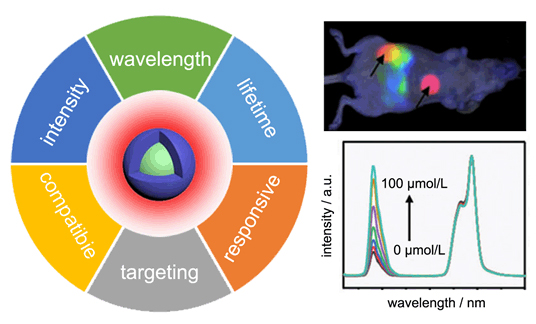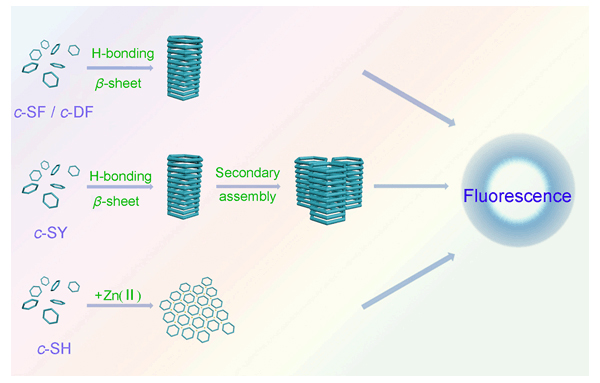-
-
 About the Cover:
About the Cover:On the cover: Cyclic dipeptides form nanofibers with different diameters driven by hydrogen bond interactions. The assemblies have fluorescent properties, and both the coordination of zinc ion with the imidazole group on histidine and the oxidation of phenolic hydroxyl group in tyrosine enhance the fluorescent emission intensity of cyclic dipeptides. The self-assembly of cyclic dipeptide provides a new route for bioluminescent material development. [Wang, Jiqian et al. on page 1279-1286.]
On the back cover: Highly fluorescent polymer dots (Pdots) have been developed as an excellent fluorescent bioprobe recently. Herein, we reported a facile method for fine-tuning the emission color from blue to red of nonconjugated Pdots synthesized with tetraphenylethylene (TPE) and poly(N-vinyl-2-pyrrolidone)-Eu(III) complex (PVP-Eu(III)). The investigation of cellular imaging indicated that the photoswitchable dual-emission could be easily realized in HeLa, HepG2 and A549 cells by merely turning the excitation wavelength. Therefore, the Pdots is an ideal dual-color live cell imaging probe. [Guan, Xiaolin et al. on page 1268-1278.]
-
-
Current Issue
Review
Communication
Article
Volume Contents









